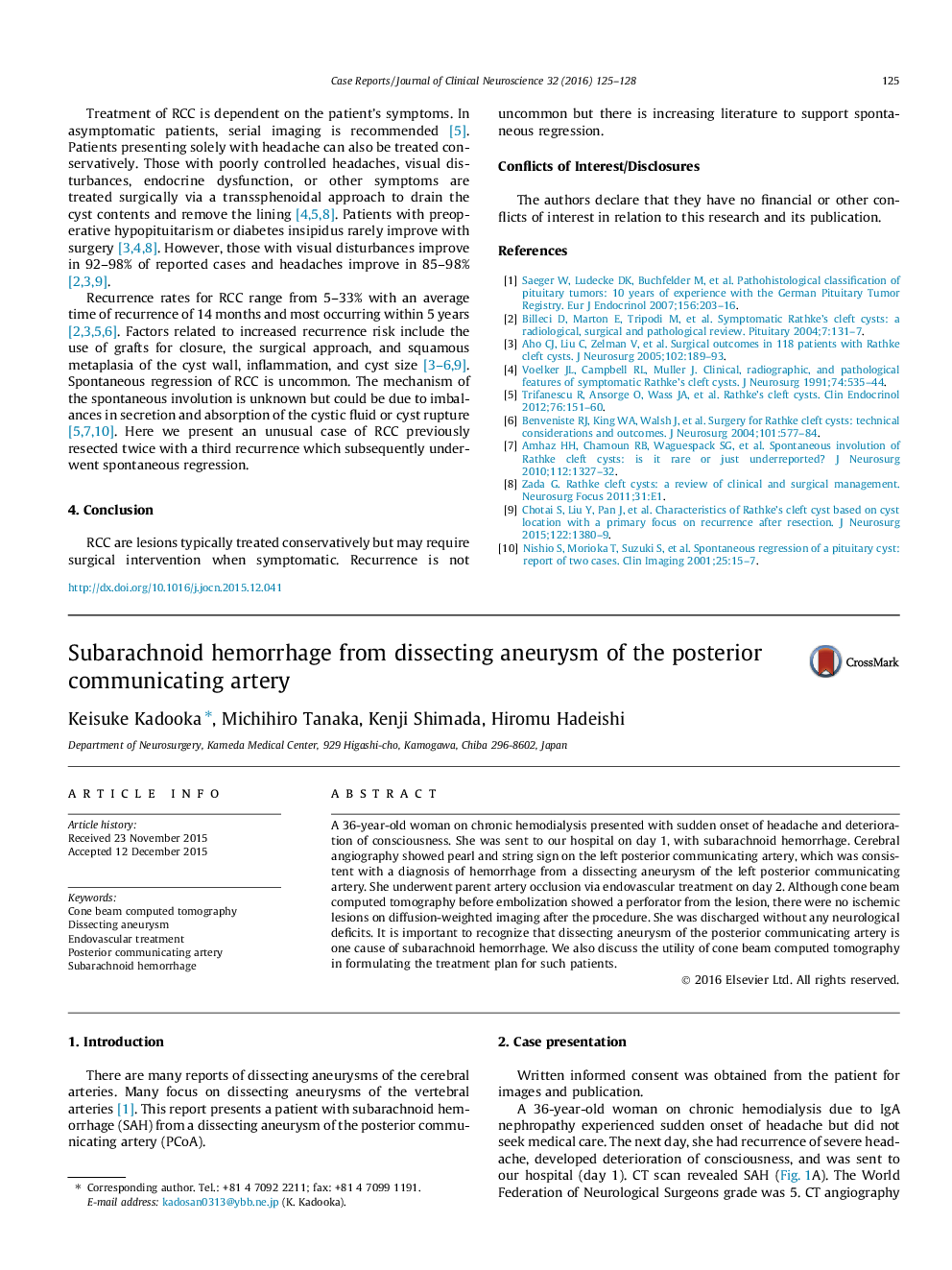| Article ID | Journal | Published Year | Pages | File Type |
|---|---|---|---|---|
| 3058059 | Journal of Clinical Neuroscience | 2016 | 4 Pages |
•Posterior communicating artery (PCoA) dissection can cause subarachnoid hemorrhage.•Endovascular treatment is effective for subarachnoid hemorrhage from the PCoA.•Cone beam computed tomography can help to formulate treatment strategies.
A 36-year-old woman on chronic hemodialysis presented with sudden onset of headache and deterioration of consciousness. She was sent to our hospital on day 1, with subarachnoid hemorrhage. Cerebral angiography showed pearl and string sign on the left posterior communicating artery, which was consistent with a diagnosis of hemorrhage from a dissecting aneurysm of the left posterior communicating artery. She underwent parent artery occlusion via endovascular treatment on day 2. Although cone beam computed tomography before embolization showed a perforator from the lesion, there were no ischemic lesions on diffusion-weighted imaging after the procedure. She was discharged without any neurological deficits. It is important to recognize that dissecting aneurysm of the posterior communicating artery is one cause of subarachnoid hemorrhage. We also discuss the utility of cone beam computed tomography in formulating the treatment plan for such patients.
